The 1800s was an exciting time for Christianity in America. At the same time that secularism and liberal Christianity made huge gains, several renewal movements occurred throughout the land, including the Second Great Awakening. In this episode you learn about the birth of the Protestant missionary movement with the Moravians and the Baptists, how the various Adventist denominations got their start, and last of all the most successful made-in-America religion–Mormonism. These thumbnail sketches will help you understand a number of groups that are still around today.
This is lecture 14 of a history of Christianity class called Five Hundred: From Martin Luther to Joel Osteen.
All the notes are available here as a pdf.
—— Notes ——
Pietism (late 17th c. to 20th c.)
- Movement within Reformed and Lutheran countries (happened during Enlightenment)
- 1675 – Philipp Jakob Spener (1635-1705) published Pious Desires
- The earnest and thorough study of the Bible in private meetings
- Laity should share in the spiritual government of the Church
- Knowledge of Christianity must be attended by the practice
- A sympathetic and kindly treatment of Christians of other groups
- Universities should give more prominence to the devotional life
- Rather than pleasing rhetoric, preach to implant Christianity in the inner man
- Emphasized inner life and conversion
- Millennialism (Pietists had millennialist leanings)
- Continued baptizing infants but de-emphasized it in favor of conversion experience
- Halle in Saxony established as center of Pietism
Moravians (Unitas Fratrum)
- Descendants of the 15th Hussites; persecuted during 30 years war in Bohemia
- In late 17th c., they went to Poland; 18th c. they went to Saxony
- 1722 – Count Nikolaus Ludwig von Zinzendorf (1700-1760), a Pietist who attended school at Halle (godson to Spener) gave the Moravians land which became the community of Herrnhut
- 1731 – Some Moravians went to the coronation of the King of Denmark.
- 1732 – Johann Leonhard Dober (1706-1766) chose David Nitschmann (1695-1772) as his travelling companion; petitioned the Danish government for passage to St. Thomas in Virgin Islands
- Teaching them about God and how to read and write
- In less than a century, the Pietist Moravians sent 300 missionaries throughout the world and baptized some 3,000 converts.
- Moravian motto:
“In essentials, unity; in nonessentials, liberty; and in all things, love”
- Today, around 825,000 members worldwide (largest concentration is in Tanzania)
Modern Missions
- 1792 – William Carey (1761-1834) published An Enquiry into the Obligations of Christians to Use Means for the Conversion of the Heathens
- Used the best available geographic and ethnographic data to map and count the number of people who had never heard the gospel
“It is inconsistent for ministers to please themselves with thoughts of a numerous auditory, cordial friends, a civilized country, legal protection, affluence, splendor, or even a competency. The flights, and hatred of men, and even pretended friends, gloomy prisons, and tortures, the society of barbarians of uncouth speech, miserable accommodations in wretched wildernesses, hunger, and thirst, nakedness, weariness, and painfulness, hard work, and but little worldly encouragement should rather be the objects of their expectation. Thus the apostles acted, in the primitive times, and endured hardness, as good soldiers of Jesus Christ; and though we living in a civilized country where Christianity is protected by law, are not called to suffer these things while we continue here, yet I question whether all are justified in staying here, while so many are perishing without means of grace in other lands.”
-
- Missionary in India
- By time of his death, he translated the NT into 24 of India’s native languages.
- 1799 – Church Mission Society founded in England
- Active all over the world, including the Middle East
- 1812 – American Board of Commissioners for Foreign Missions
- 1865 – Hudson Taylor founded China Inland Mission (now Overseas Missionary Fellowship).
- Hudson (1832-1905) and Maria Taylor (1837-1870) went to China in 1860.
- Wore Chinese clothing and spoke Chinese at home (offended other missionaries)
- 1886 – Student Volunteer Movement founded by Arthur Tappan Pierson (1837-1911)
- Often sent at great personal sacrifice; knew 80% died within two years
- 1910 – Edinburgh Missionary Conference
- Reviewed state of evangelism, Bible translation, church support, indigenous leadership
- Emphasis on self-governing, self-supporting, self-propagating
- 1942 – Wycliffe Bible Translators (now Wycliffe Global Alliance) founded by William Cameron Townsend (1896-1982)
- Focus on translating Bible into native languages; have completed 700+ translations
- 6,900+ languages spoken in the world[1]; 1,294 languages have whole NT; 513 languages have whole Bible
- Missionary in India
Camp Meetings and the Second Great Awakening (1790-1840s)
- 1801 – Cane Ridge Revival (August 6-12) in Kentucky
- Barton Stone (1772-1844) expected maybe 10,000, and 20,000 people came.
- Revival meetings of this type continued for 30 years.
- Reaction against skepticism, deism, and rational Christianity
- Charles Finney (1792-1875)
- Revival preacher (dynamic); favored social reforms for women and African Americans; reason-centered optimism characterized Finney’s preaching
- Pressured people not to leave meeting until they were sure of salvation
Church of Christ
- 1804 – Barton W. Stone left the Presbyterian Church.
- Determined Bible alone as guide
- 1807 – started believers’ baptism
- 1811 – Alexander Campbell (1788-1866) founded a congregation.
- Unity could be achieved only if all returned to NT as sole guide
- 1832 – Stone’s movement merged w/ the Campbellites.
- Principles: restorationists; plural leadership; weekly communion; autonomy of local congregations; unity of all believers; Bible as sole authority in religious matters
- 1849 – Disagree over missionary society (no mention in NT)
- 1859 – Disagree over musical instruments in worship
- 42,000 congregations with 5,062,074 people (Church of Christ)
William Miller (1782-1849)
- Father of Adventism who studied prophecies of Daniel and used day-year method
- 1822 – He predicted Christ would come by 1843 (made public in 1831).
- From 1840 onward, Miller’s movement transformed into a national campaign.
- Between 50,000 and 100,000 people believed his prediction of Christ’s return.
- Set date for second coming between March 21, 1843 and March 21, 1844
- At a camp meeting, a man named Samuel Snow presented the date Oct 22, 1844
- 1844 – Great Disappointment occurred on October 22. (Christ did not come back.)
- 1845 – Albany Conference
- Millerites wanted to determine future of the movement
- After this meeting, they call themselves “Adventists” or “Second Adventists.”
Advent Christian Church
- 1861 – Formed; grew rapidly but declined in the 20th century
- Conditional immortality; annihilationism; focus on 2nd advent; some do not believe in the Trinity
- In 2002, they had 302 churches with 25,277 members.
Seventh-day Adventist Church
- 1863 – Ellen G. White (1827-1915) became leader of Seventh Day Adventists.
- Gave Miller’s predictions a spiritual interpretation
- Claimed 2,000 visions from 1844 onwards
- Sabbath keeping; food laws (J.H. Kellogg and Sylvester Graham were Adventists)
- In 2011, they had 17,210,000 members (not counting children).
Christadelphians
- 1844 – John Thomas (1805-1871) founded the Christadelphians (brothers of Christ)
- Biblical Unitarian; mortal emergence, closed communion, non-devil
- Protesters by Alan Eyre is Christadelphian
- Estimated 60,000 Christadelphians in 120 countries world-wide
Church of God Seventh Day
- 1863 – Founded after split with White’s group in 1858 (before they became SDAs)
- Sabbatarian like SDAs
- 1999 – They had 185 churches with 11,000 members.
Church of God General Conference
- After the Great Disappointment of 1844, people still believed in 2nd coming to establish kingdom
- Joseph Marsh (1726-1811)
- Editor of Millerite papers (part of Millerite movement)
- Stopped associating with Miller after Albany Conference of 1845
- Believed: second advent; to establish kingdom on earth during millennium; restitution of all things; establish throne of David; send Jews forth to nations as missionaries; bring judgment on unjust; reward righteous; biblical Unitarian; conditionalist; name should be “Church of God”
- Benjamin Wilson (1817-1900)
- Had contact with Marsh as well as with John Thomas (Christadelphian founder)
- 1864: translated Emphatic Diaglott − the earliest interlinear published in America
- Printed that Jews would return to their ancestral homeland
- First national conference attempts in 1869, 1888, 1889, 1910
- 1921 (official founding date): stressed importance of local congregations
- Beliefs:
- The oneness of God (1 Cor. 8:6)
- That the Holy Spirit is God’s power (Acts 1:8)
- Jesus Christ is God’s only begotten Son (Matt. 16:16) and is our Mediator (1 Tim. 2:5)
- The Bible is the inspired Word of God (2 Tim. 3:16)
- The mortality of man (Job 4:17; Psa. 146:4)
- The near return of Christ (Acts 1:11), and life only through him (Col. 3:3)
- The literal resurrection of the dead (John 5:28, 29)
- The immortalization of those in Christ (1 Cor. 15:53, 54)
- The destruction of the wicked (Rev. 21:8)
- The final restoration of Israel as the Kingdom of God under the kingship of Christ (Luke 1:32)
- The church to be joint heirs with Christ (Rom. 8:17), and Israel to be made head over Gentile nations (Isa. 60:13)
- The “restitution of all things which God hath spoken by the mouth of His holy prophets since the world began” (Acts 3:21)
- It also firmly advocates repentance and immersion in the name of Jesus Christ for the remission of sins (Acts 2:38), and a consecrated life as essential to salvation (Heb. 12:14)
- Congregational polity
- Lord’s Harvest International active in Africa (147 congregations), Russia, India, Pakistan, Canada, Haiti, Mexico, Peru, Uruguay, Korea, and US
- Atlanta Bible College in McDonough, GA
Jehovah’s Witnesses
- 1884 – Charles Taze Russell (1852-1916) founds Zion’s Watch Tower Tract Society
- Close connections to Millerite movement; embraced nearness of the end
- 1909: moved to Brooklyn
- F. Rutherford (1869-1942) took over movement
- 1876 – Russell’s interpretations spread through magazine Zion’s Watchtower and 7 volume work Studies in the Scriptures (1886-1917)
- Nonparticipation in government, politics, warfare
- 1931 – Renamed to Jehovah’s Witnesses
- Distinctives: no blood transfusion; only true organization with which God is working; pacifists; Unitarian with pre-existence; New World Bible Translation
- 2008 – The JWs had around 7,000,000 members
Mormons (Church of Jesus Christ of Latter Day Saints)
- Made in America religion: optimistic, pragmatic, activist, adventuring
- 1830 – Joseph Smith (1805-1844) published Book of Mormon
- Started in “burned-over district” of New York (western area)
- Fiercely opposed by surrounding society b/c of polygamy and exclusivism
- 1844 – Smith killed by mob at Nauvoo, IL
- Brigham Young (1801-1877) led after Smith
- 1847: established center in Salt Lake City in Utah
- 1890 – Banned polygamy
- 1896 – United States allowed Utah to join
- More than 15 million today (in America, 2%)
- Fiercely evangelistic (every male encouraged to go on 2-year missionary trip)
[1] http://www.wycliffe.org/about/statistics.aspx
—— Links ——
- For more on the Church of God General Conference, see Interview 16: Church of God Vision with Seth Ross
- See all the episodes of Five Hundred: From Martin Luther to Joel Osteen.
- The three main textbooks for this class include:
- The European Reformations by Carter Lindberg
- The Radical Reformation by George Williams
- Modern Church History by Tim Grass
- Check out these other Restitutio historical podcasts
- Intro music: “District Four” by Kevin MacLeod. Licensed under Creative Commons: By Attribution 3.0 License.

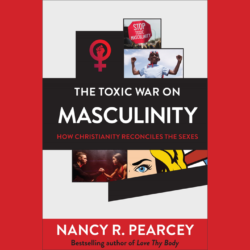
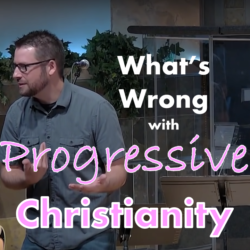
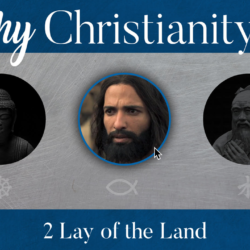
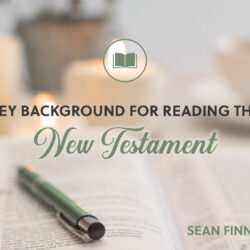
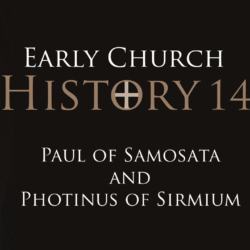
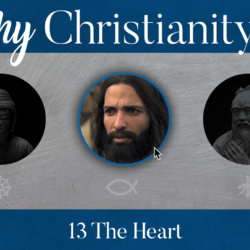
Wow, thanks for doing this Sean! History is truly valuable in giving us perspective, isn’t it!